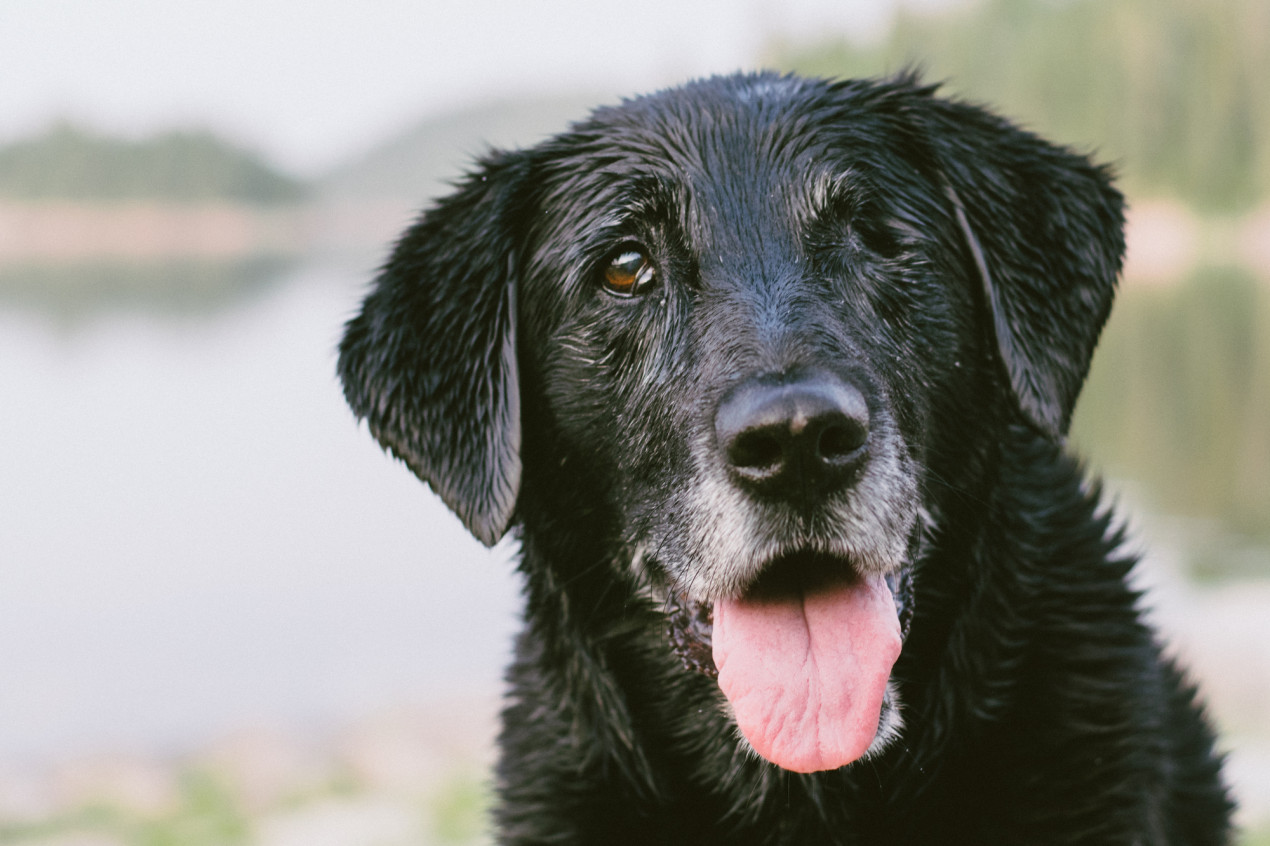Do you need help?

What should I do if my dog has breathing problems?
Breathing problems in dogs are life-threatening conditions so if your dog is breathing fast or suffering respiratory distress you should call your vet, or out of hours your nearest Vets Now, as quickly as possible.
How to help a dog breathe better
Breathing difficulties can be fatal so the first step should always be to contact your vet who will advise you on what to do next. This will ensure your dog gets the treatment they need as quickly as possible.
After you have contacted your vet, make sure your dog is as comfortable as possible as you safely transport them to the clinic. Here are our tips for transporting a pet in an emergency.
Want to talk through your concerns with a vet?
Book a video chat for immediate peace of mind
Dog respiratory system
A dog’s respiratory system is complex and contains several parts, including the lungs, windpipe (trachea), throat, nose and mouth. Diseases in any part of this system can cause breathing problems in dogs.
Difficulty or laboured breathing is known as dyspnoea, and excessively fast breathing is called tachypnoea.
Breathing issues can occur in any breed or age, but they are particularly common in brachycephalic (known as flat-faced breeds) with narrowed nostrils and elongated soft palates, such as French bulldogs and pugs. Some toy breeds, including Yorkshire Terriers and Chihuahuas, are more likely to suffer from windpipe issues.
What's normal breathing in dogs?
It can be difficult to determine whether your dog is breathing normally or not. Healthy dogs have a breathing rate of between 15 and 30 every minute, and their breathing should never be laboured or a struggle. Any persistent change in breathing pattern should be checked. If in doubt contact your vet or, out of hours, your nearest Vets Now clinic right away.
Does my dog have breathing problems?
Rapid breathing in dogs may simply be down to excitement or exercise. Dogs may also pant when they’re in fear, stressed or hot. Panting is one of the most important ways a dog thermoregulates.
But beware, heavy or rapid breathing is an early sign of heat stroke and should be closely monitored. If you’re worried your dog has heat stroke please read our advice article here.
Dog breathing funny - recognising abnormal breathing
Your dog may drool more than normal and look like they’re choking or in distress. They may also make loud noises such as snorting or rasping.
Another common sign of breathing difficulties is when your dog is breathing heavily or panting but isn’t warm and hasn’t been exercising. Heavy breathing in dogs should be of particular concern if their mouth is drawn very wide (like a ‘grin’) and/or you can see their nostrils moving.
Dogs with breathing difficulties will also sometimes stand or lie with their neck stretched out and elbows side apart (orthopnoeic position) – and they may become distressed if you try to interact with them. Check to see if their sides and tummy are moving in and out more noticeably and/or faster than usual and pay particular attention to their tongue and gums. If they’re an unusual colour, particularly if there is a blue or blue-purple tinge, contact your vet straight away.
You might also be interested in:

Want to talk through your concerns with a vet?
Book a video chat for immediate peace of mind
Dog laboured breathing causes
Laboured breathing or shortness of breath, often called dyspnoea, may prevent your dog from getting enough oxygen into its bloodstream and is a life-threatening emergency.
The causes of laboured breathing in dogs are varied. One of the most common in older pets is fluid in the lungs or chest cavity. This is often associated with heart disease and lung disease. Other less common causes of dyspnoea in dogs are foreign objects, lung cancer, infections such as pneumonia, injuries to the chest wall, kennel cough, and allergies. Other diseases of the nose, throat, windpipe, lungs and diaphragm may also be to blame. Breathing abnormally can also be a symptom of other serious underlying issues such as pain or metabolic diseases.
Why is my dog breathing fast?
Rapid breathing in dogs may not necessarily be a sign of distress. If they are breathing fast and shallow and their mouth is wide open with their tongue hanging out, they could be panting to keep cool.
However, if your dog is breathing heavily and faster than circumstances warrant – with their mouth closed, or only partially open – it could be a sign of something more serious and you should contact your vet immediately.
Dog breathing fast causes
When dogs are breathing unusually fast, they are said to be suffering from tachypnoea. Causes of tachypnoea include lower-respiratory issues such as bronchitis or fluid on the lungs and non-respiratory issues such as anaemia, heart disease and bloat.
In some cases, tachypnoea is also brought on by the likes of stress, fear, heat or fever. It’s worth bearing in mind that tachypnoea may progress to dyspnoea so it should never be ignored.
Puppy rapid breathing
Young dogs are at an increased risk of developing respiratory disease. This is mainly because their respiratory and immune systems aren’t fully developed, meaning they’re more likely to suffer fluid in the lungs. If you’re in any doubt about your puppy’s breathing, you should seek veterinary attention as quickly as possible.
Want to talk through your concerns with a vet?
Book a video chat for immediate peace of mind
My dog has breathing problems, what will happen at the vet?
Sometimes your dog will need urgent oxygen therapy upon arrival. In that case, the staff may take your pet from you to start stabilisation immediately. Your vet will then ask you about your dog’s health, the onset of signs, and any possible incidents that may have caused them to have breathing difficulties. During an examination, your vet will observe how your dog breathes and will listen to their chest for evidence of a heart murmur, fluid in the lungs or potential obstruction of his airways.
Your dog’s gum colour will also be evaluated, as this can indicate whether oxygen is being delivered to the organs effectively, or if there is a very low red blood cell count (anaemia).
Treatment for breathing problems in dogs
If your dog is having significant difficulty breathing, the vet or vet nurse may give them oxygen to help them. In most cases, a blood test will also be required to check for underlying conditions. The vet may also perform an x-ray or ultrasound to examine the lungs and heart.
Treatment will depend on the nature of the clinical signs and the diagnosed cause. Most cases will require hospital admittance until your dog’s breathing has significantly improved.

